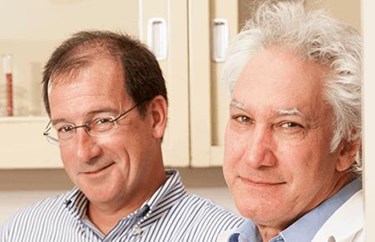Cancer Breakthroughs: A Look to The Past Can Be A Look To The Future
By Jeffrey Bacha & Dennis Brown

Medical breakthroughs in the treatment of cancer have arrived at an accelerated pace. Seemingly each day, a new “next-generation” technology makes headline news, or a CEO touts a treatment as a game changer. While many of these will miss, others will succeed and undoubtedly make a difference in the lives of thousands of patients and their families.
While the “new” label always generates somewhat of a wow factor, many of these discoveries have been the subject of laboratory research for decades as biological hypotheses that have intrigued scientists. The truth is; it’s not always the technologies themselves that are new and ground-breaking, but rather the modern basis and translational as well as computational methods that allow us to unlock answers to some of these long-standing questions and leading us to new treatments that will benefit countless patients.
Sometimes the idea that “what’s old is new again” can be positive when therapies that were pushed to pharma’s back burner get moved to the forefront. (See “The Business Benefits Of Revisiting Abandoned Therapies.”)
The most recent examples of this phenomenon are PARP inhibitors (PARPi), which have been winning FDA approval for the treatment of BRCA-mutated//HR deficient cancers. These “new” medicines are the product of more than half-century of research, which at one point was cast aside by Big Pharma and revived decades later.
Pfizer’s 2016 acquisition of Medivation provided Pfizer access to the PARPi talazoparib, following the disposition of Pfizer’s first PARPi program in 2011. Once PARP became a “hot” cancer target, Pfizer paid $16 billion to get back in the game! Interestingly, Tessaro’s PARPi Zejula (niraparib), which was approved last month, was originally a Merck cast-off but has now found redemption and success elsewhere.
For context, PARP was first described in 1963. Interestingly, the idea of synthetic lethality — the concept that one mutation has no effect, but combining multiple mutations can lead to cell death — was around nearly 20 years before the discovery of PARP. Renewed interest in PARP as an important cancer target depended on the development of a new understanding of the intricate network of DNA-repair mechanisms on which our cells depend for survival.
Similarly, chimeric antigen receptor T cell (CAR-T) therapy that captured headlines and major investments in 2010 and 2011 was rooted in scientific observations and discoveries made in the 1960s by researchers like Steven Rosenberg at the National Cancer Institute (NCI). Developed in the interim were the genetic engineering techniques that allow precise DNA-level genetic instructions to be inserted into T cells to allow them to simultaneously target, attack, and sustain killing of cancer cells.
The phenomenon of science coming full circle and re-energizing a back-burnered program is not new. Interest in Taxol was modest for more than 15 years following its discovery in the 1960s until it was demonstrated that Taxol’s mechanism of action was unique. With that, interest in Taxol exploded, and it gained approvals as a foundational treatment for breast and lung cancer. Taxol became a “miracle drug” more than 30 years after it was first discovered! The evolution of biological techniques to identify the mechanism combined with the discovery of commercial-scale production methods made this possible.
DelMar’s own work with VAL-083 (dianhydrogalactitol) follows the same path, and hopefully, growth trajectory. Dianhydrogalactitol was extensively studied in more than 40 clinical trials at the National Cancer Institutes but was deserted as interest in cytotoxics waned in favor of targeted therapies in the early 1980s. Through collaborations with leading academic researchers including the University of Texas MD Anderson Cancer Center, UCSF, Duke University, and others, we have employed modern biological techniques to gain a better understanding of its mechanism of action. This understanding has allowed us to identify cancer subpopulations that may benefit from “new therapy” with this “old” molecule.
Science takes time, and the medical community learns with each step and failure along the way. The quest for advanced scientific understanding also necessitates the development of new research techniques and tools. The questions asked by scientists endure, while our ability to find answers continues to evolve leading to new opportunities and better treatments for patients. For this reason, sometimes a look into the past is really a look to the future.
Bios:
Jeffrey Bacha is CEO and Dennis Brown, Ph.D. is CSO of DelMar Pharmaceuticals.
